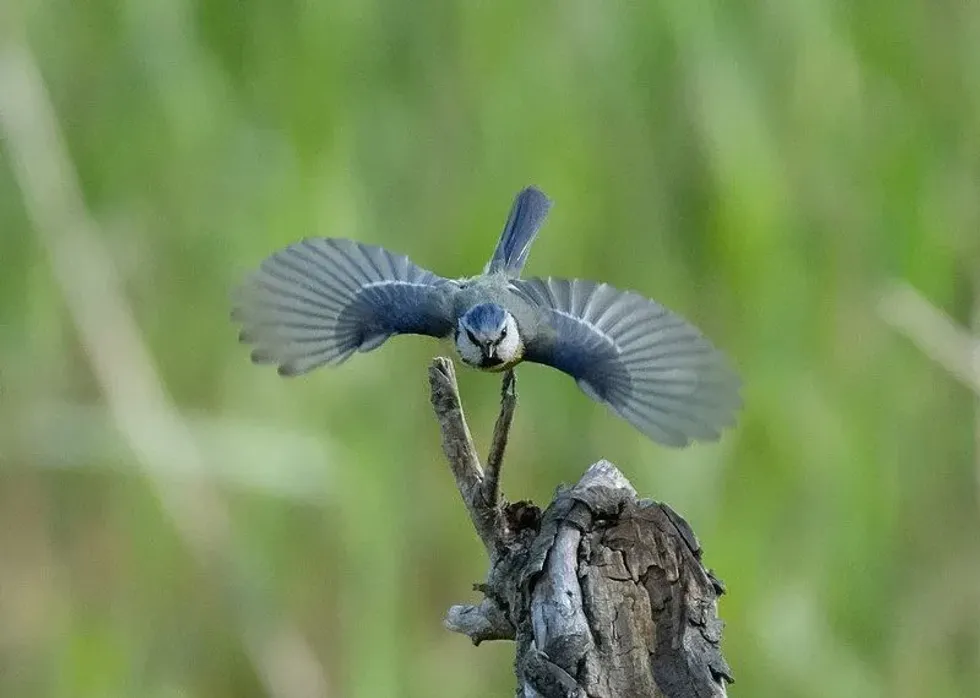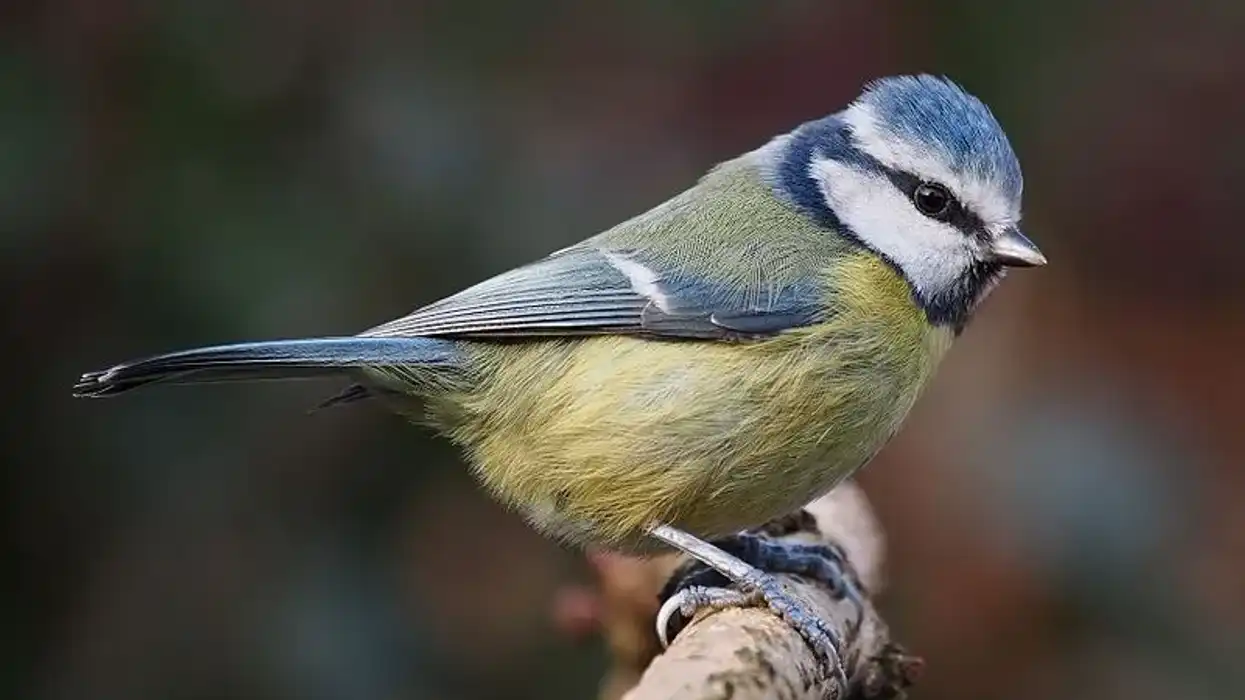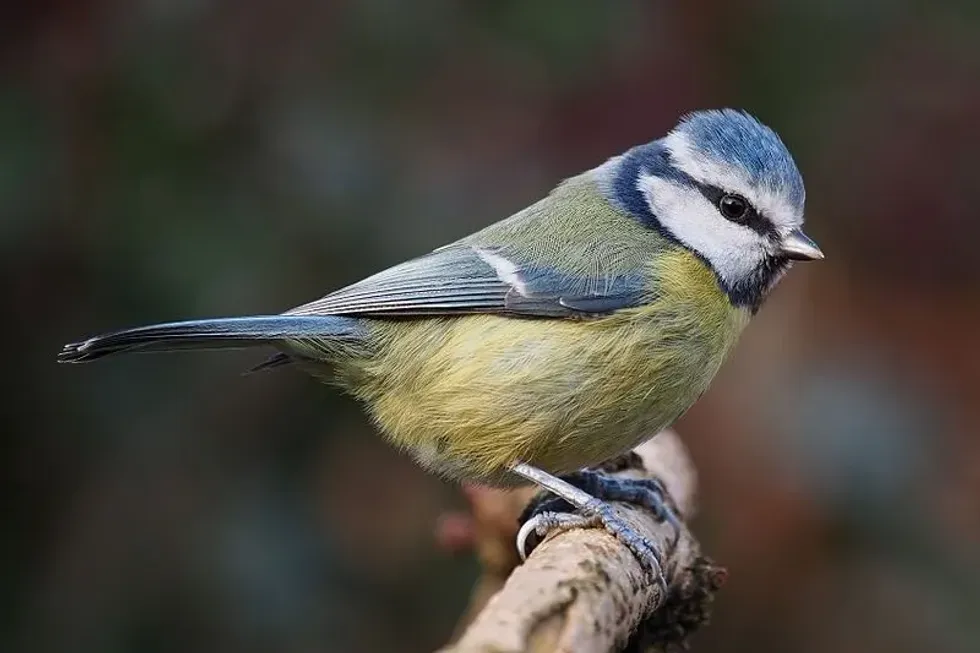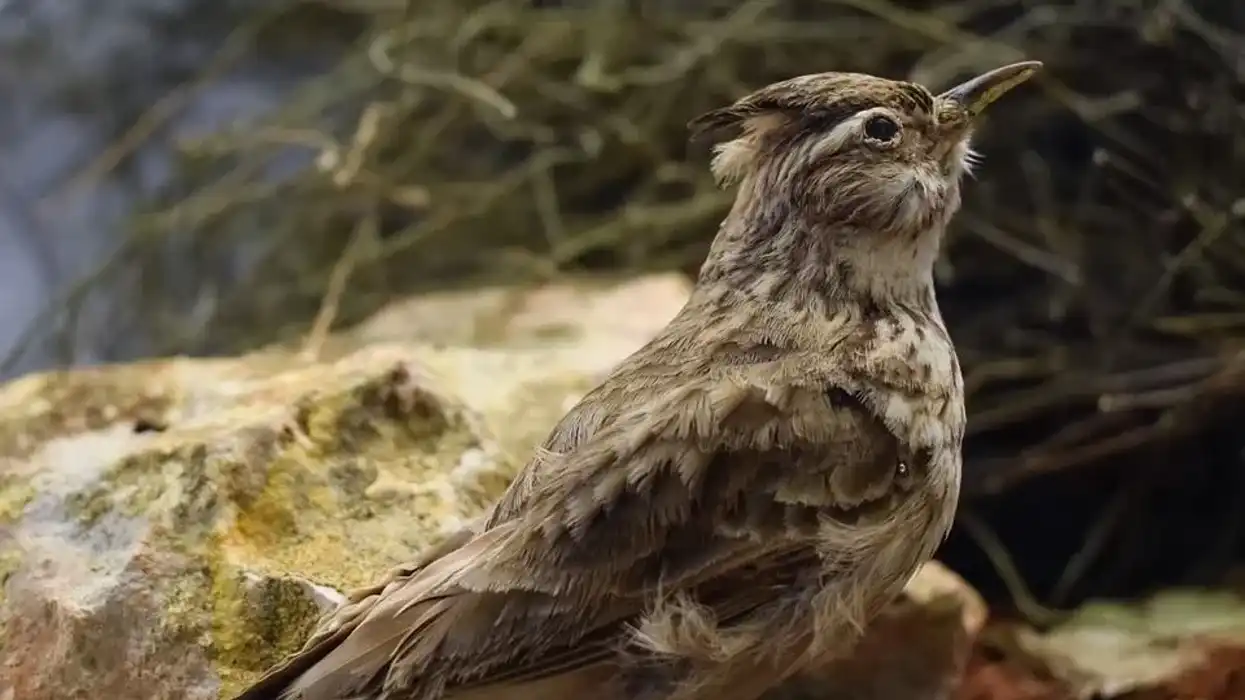Fun Eurasian Blue Tit Facts For Kids
Content
- What type of animal is a Eurasian blue tit?
- What class of animal does a Eurasian blue tit belong to?
- How many Eurasian blue tits are there in the world?
- Where does a Eurasian blue tit live?
- What is a Eurasian blue tit's habitat?
- Who does Eurasian blue tit live with?
- How long does a Eurasian blue tit live?
- How do they reproduce?
- What is their conservation status?
- What does Eurasian blue tit look like?
- How cute are they?
- How do they communicate?
- How big is a Eurasian blue tit?
- How fast can a Eurasian blue tit run?
- How much does a Eurasian blue tit weigh?
- What are the male and female names of the species?
- What would you call a baby Eurasian blue tit?
- What do they eat?
- Are they dangerous?
- Would they make a good pet?
- Did you know...
- How to tell male and female Eurasian blue tit apart?
- Is Eurasian blue tit endemic?
Do you like small birds like the house wren? Then, you'll find the Eurasian blue tit fascinating.
The Eurasian blue tit (Cyanistes caeruleus) is one such bird that is commonly seen in the gardens of the UK. This bird is native to the European continent, even though some populations are also seen in parts of the Middle East, Africa, and Asia minor.
The bird gets its name from the azure blue feathers that cover its nape, tail, and is present on wings.
Hence, the Eurasian blue tit is also known as the azure tit. These bright blue and yellow birds have a beautiful blue crown on its head, which is more prominent in males.
If you happen to catch these birds in a garden, then you will surely see the birds use a short jerky motion to ascend trees. It will also hang upside down from a natural tree stump or an artificial tree stump and look around the place.
These birds also have a memorable call that can be heard, especially in the winter months. The species are considered one of the worst birds for many plants, and it can go through the flower buds of trees in the hunt of insects.
This bird will also pull up a tree bark to hunt for little critters. During the breeding and mating season, you can catch the species looking for a suitable hole of trees or a nest box before it lays the eggs.
Mother blue tits are known for being extremely caring to the chicks. Compared to many other species of garden birds, these birds are currently thriving, and the numbers are on the increase.
Want to know more about these birds? Keep reading to learn interesting facts about this Eurasian avian species. Also, check out the articles on tufted titmouse and coal tit to know about other tits.
Eurasian Blue Tit Interesting Facts
What type of animal is a Eurasian blue tit?
The Eurasian blue tit is a small and colorful bird that is commonly seen in European gardens.
What class of animal does a Eurasian blue tit belong to?
The Eurasian blue tit belongs to the class Aves and to the genus Cyanistes. Formerly, this bird was classified with the scientific name Parus caeruleus and in the genus Parus, which contains the great tit. Since then, the Eurasian blue tit has been reclassified from Parus caeruleus to Cyanistes caeruleus.
How many Eurasian blue tits are there in the world?
As the blue tit is one of the most common birds of the world, it is really hard to put down an exact number on its population. However, some estimates are definitely made, and it is said that the European population is somewhere around 16,500,000–23,000,000 pairs.
Fortunately, the population of this bird is on the rise; hence, we will enjoy the blue tit's song for a long time.
Where does a Eurasian blue tit live?
The Eurasian blue tit (Cyanistes caeruleus) and its subspecies are said to be native to Europe. These birds are mainly found in areas with hotter temperate and Mediterranean climates.
Alongside some populations of the birds are also seen in countries of the Middle East, different parts of Asia, and Africa. Even though this is mostly a sedentary bird, about 1.2 % of its population is known to migrate in the winter season.
This phenomenon is mainly seen in blue tits that live in Northern Europe. However, most birds choose to stay back and live close to their native spaces.
What is a Eurasian blue tit's habitat?
In Europe, especially in the UK, the Eurasian blue tit is known for its presence in parks, gardens, and urban areas. This bird is mostly found in deciduous woodlands, and it can be seen to hang upside down from a tree, a wall, or an artificial tree stump.
In the non-breeding months, blue tits may also inhabit conifers. These birds do have a high tolerance for cold and high altitudes, even though it is mostly seen in areas with a temperate climate.
Who does Eurasian blue tit live with?
The Eurasian blue tit is said to live alone except for the breeding period. However, some birds do prefer to live in groups, and these birds have a habit of roosting in ivy or evergreen plants.
During nesting season, these birds may use a hole in a tree or go for artificial nest boxes left. Groups of blue tits can be especially seen during the late winter and spring, when the birds may also get together with other tit species.
How long does a Eurasian blue tit live?
The average lifespan of blue tits is around two to three years. However, some individuals have managed to live for 10 years or more. As small birds, blue tits are quite prone to predation from other birds or even small mammals.
How do they reproduce?
Like all other birds, reproduction is crucial for survival in the Eurasian blue tits. The beautiful pair comes together for the season and either nest in tree holes or in an artificial nest box left by a caring human.
Try to leave several nest boxes, as birds may destroy many of them. These male birds are also enthusiastic to defend the territory of their nest. The same nest box can also be used for several years by a pair of blue tits.
The female blue tits mainly incubate the chicks, while the male feeds the female. April to May is the usual breeding season for the European blue tits, and these birds mainly feed on caterpillars during this time.
Around seven to eight eggs are laid by a female during this time, but some may lay as many as 19 eggs. Females eagerly sit on the eggs to keep them warm.
12–16 days is the usual incubation period, and once the chicks hatch, the father usually takes up the role of feeding. It takes just 16–23 days for the chicks to fledge.
Unfortunately, young blue tits have a low survival rate, and many die in the nest from starvation. However, after fledging, many chicks are eaten by common predators like domestic cats.
What is their conservation status?
Currently, the Eurasian blue tit is listed as of Least Concern in the International Union for Conservation of Nature (IUCN) Red List.
Eurasian Blue Tit Fun Facts
What does Eurasian blue tit look like?
When it comes to Eurasian blue tits, the most striking thing about this tiny bird species is their appearance, through which they can be easily identified. The dark blue feathers are contrasted with yellow, white, green, gray, and black feathers.
The azure blue crown is the most striking thing about this bird. Apart from its crown, the blue color is also seen on its nape, tail, and on wings.
The male birds of the species tend to have a brighter plumage compared to that of females. Take some time to observe its wings as its upper part has a mix of color and the predominant blue, while the underside is mostly gray.
This bird has mostly sulfur-yellow feathers on its underside with a tinge of gray. The bird has a yellow underside with a blue line running under it.
is also present on the underside. The face of the blue tit is mostly covered in white feathers along with the dark blue crown.
A dark line runs through the eyes and it has a short black bill. The bird also has bluish-gray legs and dark brown irises. Even though blue feathers are present in the juvenile, it is mostly covered in pale yellow feathers.
Interestingly, the yellow color of the feathers comes from the bird's habit of consuming yellow caterpillars. Even though the Eurasian blue tit may look like a great tit, the former is a much smaller bird with more blue feathers.

How cute are they?
Blue tits, like the long-tailed tit, are extremely cute and adorable especially because of their colorful appearance. The birds look even more delightful when it fluffs itself up with air.
How do they communicate?
One of the most prominent things about the Eurasian blue tits is its songs and calls. It is known for being a chirpy bird species that call throughout the year.
As a garden bird, the blue tits often make it memorable for people with its call that includes high-pitched zeedling notes made during copulation. These birds use calls in spring to defend their territory before the breeding season begins.
The calls can either be used to protect the territory or even to attract potential mates. Contact calls are also made by the blue tits to let each other know about the location. The whistling alarm calls are used to notify about any nearby predators.
Young blue tits use a begging call towards parents when it is hungry. The songs are used in late winter and spring, commonly heard in the European gardens.
How big is a Eurasian blue tit?
The average size of the Eurasian blue tits is around 4.2-4.7 in (10.6 -12 cm), which does tell the small size of this species. Compared to the blue tit Eurasian, the great tit is able to achieve an average size of 4.9–5.5 in (12.4-14 cm).
How fast can a Eurasian blue tit run?
The blue tit isn't the best runner as it likes to be a sedentary bird that moves with short jerky hops. Hence, little information is available about the running speed of the blue tits. However, these birds are really great at flying and have an average speed of 17 mph (27.3 kph).
How much does a Eurasian blue tit weigh?
The average weight of the species of a Eurasian blue tit is around 0.3-0.4 oz (8.5-11.3 g). This may differ according to the subspecies found in the blue tits.
What are the male and female names of the species?
There are no different names for the male and female of this bird species.
What would you call a baby Eurasian blue tit?
Baby blue tits are usually known as chicks after it hatches from the egg.
What do they eat?
The Eurasian blue tit birds have an omnivorous diet, and it mostly relies on insect prey along with fruits and nuts. As a sedentary bird, the blue tit doesn't like to move a lot, but it has a keen instinct to strip bark from trees to look for insects and spiders in search of food.
This instinct has developed into a tendency, and the birds can often do the same thing to your walls or to the putty present in windows.
These birds also enjoy munching on insect larvae. Some common insects eaten by this bird include moths, leaf miner grubs, grasshoppers, springtails, woodlice, and ants.
These birds are often considered to be the worst foes of many plants as it has a habit of ruffling the flower buds in search of insects.
However, this keen instinct has also made these birds a valuable destroyer of pests in their ecosystem. An interesting move of the blue tits is to hang upside down from a branch while in search of food.
Are they dangerous?
No, the Eurasian blue tit isn't dangerous to humans and this bird is actually quite small.
Would they make a good pet?
Even though we wouldn't recommend you to keep these birds in a cage, you can always welcome these birds to your garden. These birds do take to nest boxes; hence, you can set them up on a tree, on a wall, or on a stump during the breeding season.
Blue tits do compete for these artificial boxes, so make sure to put them in a suitable place.
Did you know...
Blue tits are known for being naughty, and there was a time when these birds used to remove the foil covering from milk bottles to get at the cream.
These birds may nest in some weird places including letterboxes and on top of street lamps.
How to tell male and female Eurasian blue tit apart?
Even though the male and female blue tit bird looks extremely similar, there is only one way to tell the birds apart. If you manage to get a Eurasian blue tit, shine an ultraviolet light on it to see if the bird has a more prominent dark blue crown.
A bird having that feature can be easily identified as a male. Blue tit Eurasian males can also have a brighter plumage compared to the female blue tit Eurasian.
Is Eurasian blue tit endemic?
The Eurasian blue tit is not really endemic to a single place as it is found in different parts of Europe, and its presence is also seen in places like the Middle East, Asia, and Africa. This species also has nine subspecies that are scattered over a diverse geographical range.
Here at Kidadl, we have carefully created lots of interesting family-friendly animal facts for everyone to discover! For more relatable content, check out these ducks facts and parrot facts pages.
You can even occupy yourself at home by coloring in one of our free printable blue tit coloring pages.
We Want Your Photos!
More for You
See All
Bachelor of Arts specializing in Journalism and Mass Communication, Postgraduate Diploma in Sports Management

Moumita DuttaBachelor of Arts specializing in Journalism and Mass Communication, Postgraduate Diploma in Sports Management
A content writer and editor with a passion for sports, Moumita has honed her skills in producing compelling match reports and stories about sporting heroes. She holds a degree in Journalism and Mass Communication from the Indian Institute of Social Welfare and Business Management, Calcutta University, alongside a postgraduate diploma in Sports Management.
Disclaimer
1) Kidadl is independent and to make our service free to you the reader we are supported by advertising. We hope you love our recommendations for products and services! What we suggest is selected independently by the Kidadl team. If you purchase using the Buy Now button we may earn a small commission. This does not influence our choices. Prices are correct and items are available at the time the article was published but we cannot guarantee that on the time of reading. Please note that Kidadl is a participant in the Amazon Services LLC Associates Program, an affiliate advertising program designed to provide a means for sites to earn advertising fees by advertising and linking to Amazon. We also link to other websites, but are not responsible for their content.
2) At Kidadl, we strive to recommend the very best activities and events. We will always aim to give you accurate information at the date of publication - however, information does change, so it’s important you do your own research, double-check and make the decision that is right for your family. We recognise that not all activities and ideas are appropriate for all children and families or in all circumstances. Our recommended activities are based on age but these are a guide. We recommend that these ideas are used as inspiration, that ideas are undertaken with appropriate adult supervision, and that each adult uses their own discretion and knowledge of their children to consider the safety and suitability. Kidadl cannot accept liability for the execution of these ideas, and parental supervision is advised at all times, as safety is paramount. Anyone using the information provided by Kidadl does so at their own risk and we can not accept liability if things go wrong.
3) Because we are an educational resource, we have quotes and facts about a range of historical and modern figures. We do not endorse the actions of or rhetoric of all the people included in these collections, but we think they are important for growing minds to learn about under the guidance of parents or guardians.







